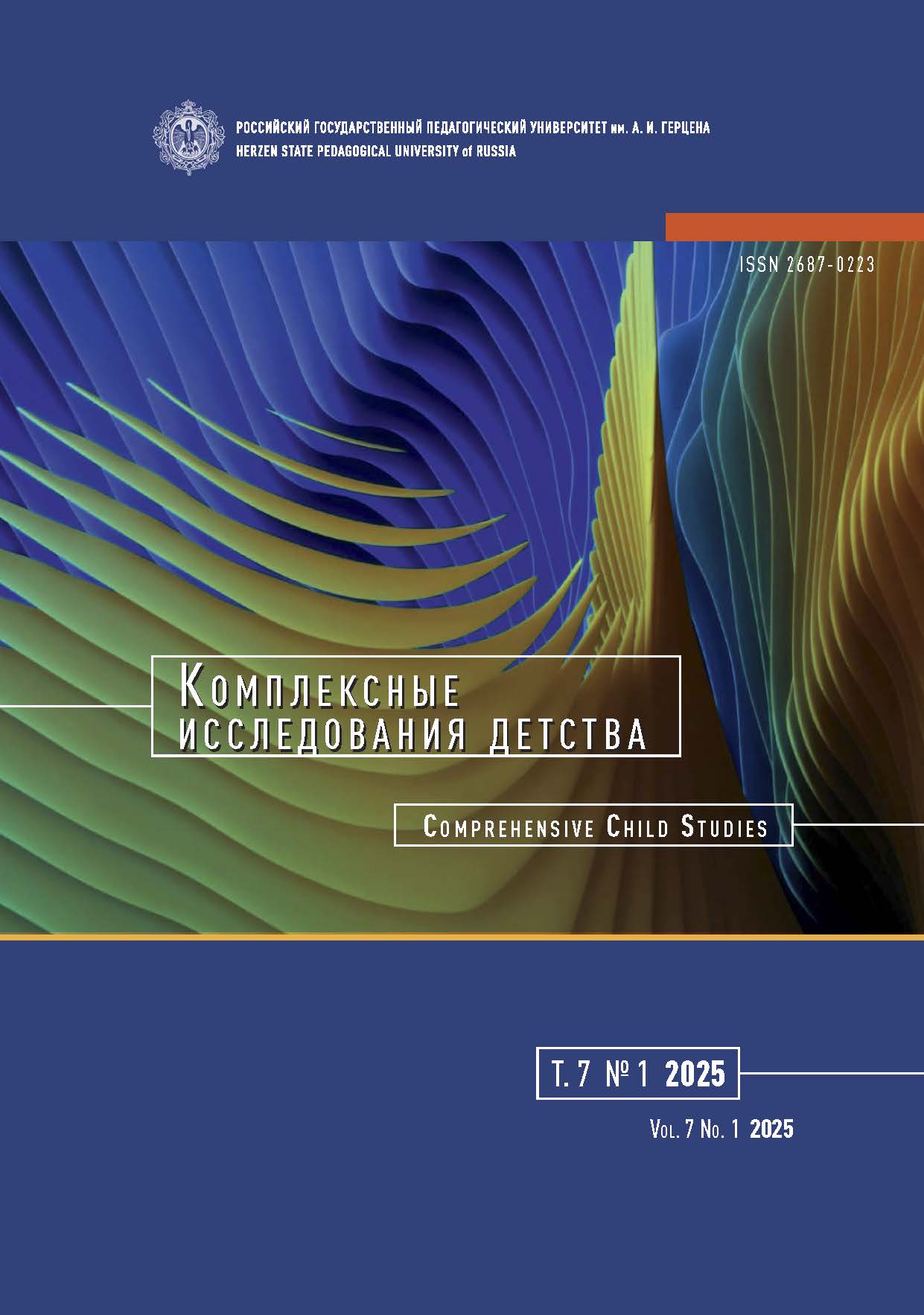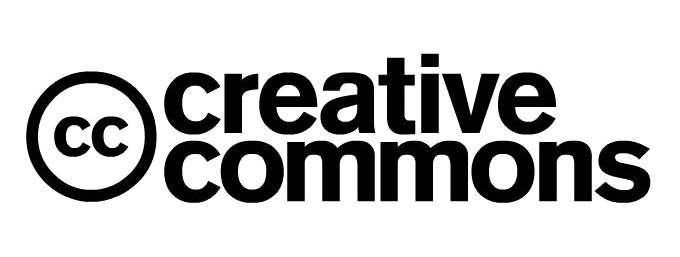The relationship between working memory and inhibitory control in children aged 5–7 years with varying durations of gadget use
DOI:
https://doi.org/10.33910/2687-0223-2025-7-1-4-13Keywords:
children aged 5–7 years, executive functions, inhibitory control, working memory, gadgetAbstract
The study examines the development of executive functions — specifically, inhibitory control and working memory — in children aged 5–7 years with different durations of gadget use. The relevance of this topic lies in the growing trend of preschoolers using digital devices from an increasingly early age and for extended periods of time.
The sample included 40 children (25 girls and 15 boys). The executive functions were assessed using go/go and go/no-go paradigms, with working memory measured using O. M. Razumnikova’s method. Data analysis was performed with the Scikit-learn library in Python. All variables were standardized (transformed into z-scores) to bring test scores from different scales to a common format. Cluster analysis, along with regression and factor analysis, was conducted on the data.
Three distinct clusters were identified. Children in the first cluster demonstrated the highest level of inhibitory control and an average level of working memory. Those in the second cluster showed a comparatively higher level of working memory than children in the other groups. The third cluster comprised children with low scores in both inhibitory control and working memory. Notably, no children exhibited high levels in both executive functions.
The analysis further revealed that children with the highest level of inhibitory control tended to have a weekday limit on gadget use set by their parents. Additionally, their fathers were the oldest in the sample.
References
ЛИТЕРАТУРА
Величковский, Б. Б. (2015) Рабочая память человека. Структура и механизмы. М.: Изд-во МГУ, 247 с.
Веракса, А. Н., Кадурина, Д. А., Мартыненко, М. Н., Якупова, В. А. (2016) NEPSY-II как инструмент изучения регуляторных функций дошкольников в России. Воспитание и обучение детей младшего возраста, № 5, с. 81–82.
Вергунов, Е. Г., Николаева, Е. И., Боброва, Ю. В. (2019) К вопросу о психометрической надежности некоторых психологических методик. Теоретическая и экспериментальная психология, т. 12, № 1, с. 61–68.
Виленская, Г. А. (2016) Исполнительные функции: природа и развитие. Психологический журнал, т. 37, № 4, с. 21–31.
Исаченкова, М. Л., Николаева, Е. И. (2023) Анализ самооценки детей от пяти до одиннадцати лет собственной включенности в цифровую среду. Мир науки. Педагогика и психология, т. 11, № 5.
Калабина, И. А., Никитина, Е. А., Николаева, Е. И. (2024) Исследование специфики действий ребенка дошкольного возраста с гаджетом и опосредование этого поведения родителями. Science for Education Today, т. 14, № 3, с. 7–23. https://doi.org/10.15293/2658-6762.2403.01
Николаева, Е. И., Вергунов, Е. Г. (2017) Что такое «executive functions» и их развитие в онтогенезе. Теоретическая и экспериментальная психология, т. 10, № 2, с. 62–81.
Николаева, Е. И., Калабина, И. А., Сутормина, Н. В. (2024) Современный дошкольник в цифровом пространстве. В кн.: Д. В. Ушаков, А. Л. Журавлев, А. В. Махнач и др. (ред.). Психология личности: методология, теория, практика. М.: Изд-во Института психологии РАН, с. 715–720.
Постановление главного государственного санитарного врача Российской Федерации от 28 сентября 2020 г. № 28 «Об утверждении санитарных правил СП 2.4. 3648-20 «Санитарно-эпидемиологические требования к организациям воспитания и обучения, отдыха и оздоровления детей и молодежи». (2020) [Электронный ресурс]. URL: http://publication.pravo.gov.ru/document/view/0001202012210122 (дата обращения 16.01.2025).
Разумникова, О. М., Николаева, Е. И. (2019) Возрастные особенности тормозного контроля и проактивная интерференция при запоминании зрительной информации. Вопросы психологии, № 2, с. 124–132.
Разумникова, О. М., Николаева, Е. И. (2021) Онтогенез тормозного контроля когнитивных функций и поведения. Новосибирск: Изд-во Новосибирского государственного технического университета, 159 с.
Разумникова, О. М., Николаева, Е. И. (2023) Онтогенез эффекта проактивной интерференции в зрительной кратковременной памяти. Российский психологический журнал, т. 20, № 4, с. 101–115. https://doi.org/10.21702/rpj.2023.4.6
Сутормина, Н. В., Николаева, Е. И., Калабина, И. А. (2024) Сравнительный анализ стратегий, применяемых в рабочей памяти дошкольниками и подростками. Психология образования в поликультурном пространстве, № 4 (68), с. 30–42.
Annarumma, M., Tedesco, I., Vitale, L. (2018) Mobile generation, digital devices and preschool education. International Journal of Digital Literacy and Digital Competence, vol. 9, no. 4, pp. 19–32. https://doi.org/10.4018/IJDLDC.2018100102
Anzman-Frasca, S., Francis, L. A., Birch, L. L. (2015) Inhibitory control is associated with psychosocial, cognitive, and weight outcomes in a longitudinal sample of girls. Translation Issues in Psychological Science, vol. 1, no. 3, pp. 203–216. https://psycnet.apa.org/doi/10.1037/tps0000028
Baddeley, A. D., Allen, R. J., Hitch, G. J. (2011) Binding in visual working memory: The role of the episodic buffer. Neuropsychologia, vol. 49, no. 6, pp. 1393–1400. https://doi.org/10.1016/j.neuropsychologia.2010.12.042
Bener, A., Al-Mahdi, H. S., Vachhani, P. J. et al. (2010) Do excessive internet use, television viewing and poor lifestyle habits affect low vision in school children? Journal of Child Health Care, vol. 14, no. 4, pp. 375–385. https://doi.org/10.1177/1367493510380081
Berchtold, A., Akré, C., Barrense-Dias, Y. et al. (2018) Daily internet time: Towards an evidence-based recommendation? The European Journal of Public Health, vol. 28, no. 4, pp. 647–651. https://doi.org/10.1093/eurpub/cky054
Cheng, X., Zhen, K., Fan, Y. et al. (2023) The effects of equine-assisted activities on execution function in children aged 7–8 years: A randomized controlled trial. Brain and Behavior, vol. 13, no. 9, article e3148. https://doi.org/10.1002/brb3.3148
Friedman, N. P., Miyake, A. (2017) Unity and diversity of executive functions: Individual differences as a window on cognitive structure. Cortex, vol. 86, pp. 186–204. https://doi.org/10.1016/j.cortex.2016.04.023
Gathercole, S. E., Pickering, S. J, Ambridge, B., Wearing, H. (2004) The structure of working memory from 4 to 15 years of age. Developmental Psychology, vol. 40, no. 2, pp. 177–190. https://doi.org/10.1037/0012-1649.40.2.177
Goode, J. A., Fomby, P., Mollborn, S., Limburg, A. (2020) Children’s technology time in two U.S. cohorts. Child Indicators Research, vol. 13, pp. 1107–1132. https://doi.org/10.1007/s12187-019-09675-x
Göpfert, D., Traub, J., Sell, R. et al. (2023) Profiles of cognitive impairment in chronic heart failure—A cluster analytic approach. Frontiers in Human Neuroscience, vol. 17. https://doi.org/10.3389/fnhum.2023.1126553
Hasher, L., Lustig, C., Zacks, R. (2012) Inhibitory mechanisms and the control of attention. In: A. Conway (ed.). Variation in Working Memory. New York: Oxford Academic Publ., pp. 227–249. http://dx.doi.org/10.1093/acprof:oso/9780195168648.003.0009
Khachatryan, K., Otten, D., Beutel, M. E. et al. (2023) Mental resources, mental health and sociodemography: A cluster analysis based on a representative population survey in a large German city. BMC Public Health, vol. 23, article 1827. https://doi.org/10.1186/s12889-023-16714-4
Kumari, J. A. P. (2020) The role of products of microfinance for reducing the poverty of the borrowers: Exploratory factor analysis. International Journal of Management Excellence, vol. 15, no. 3, pp. 2244–2251. https://doi.org/10.17722/ijme.v15i3.1172
Nikolaeva, E. I., Isaiko, A. А., Soboleva, N. А. (2020) Relationship between intelligence and executive functions in preschoolers. Lurian Journal, vol. 1, no. 2, pp. 30–43. http://dx.doi.org/10.15826/Lurian.2020.1.2.3
Nikolaeva, E. I., Kalabina, I. A., Progackaya, T. K., Ivanova, E. V. (2023) Ground rules for preschooler exposure to the digital environment: A review of studies. Psychology in Russia, vol. 16, no. 4, pp. 37–54. https://doi.org/10.11621/pir.2023.0403
Pedregosa, F., Varoquaux, G., Gramfort, A. et al. (2011) Scikit-learn: Machine learning in Python. Journal of Machine Learning Research, vol. 12, pp. 2825–2830. https://doi.org/10.48550/arXiv.1201.0490
Rodríguez, C. (2022) The construction of executive function in early development: The pragmatics of action and gestures. Human Development, vol. 66, no. 4–5, pp. 239–259. https://doi.org/10.1159/000526340
Smita, M. (2021) Logistic regression model for predicting performance of S&P BSE30 company using IBM SPSS. International Journal of Mathematics Trends and Technology, vol. 67, no. 7, pp. 118–134. https://doi.org/10.14445/22315373/IJMTT-V67I7P515
Unsworth, N., Robison, M. (2020) Working memory capacity and sustained attention: A cognitive-energetic perspective. Journal of Experimental Psychology: Learning, Memory, and Cognition, vol. 46, no. 1, pp. 77–103. https://doi.org/10.1037/xlm0000712
REFERENCES
Annarumma, M., Tedesco, I., Vitale, L. (2018) Mobile generation, digital devices and preschool education. International Journal of Digital Literacy and Digital Competence, vol. 9, no. 4, pp. 19–32. https://doi.org/10.4018/IJDLDC.2018100102 (In English)
Anzman-Frasca, S., Francis, L. A., Birch, L. L. (2015) Inhibitory control is associated with psychosocial, cognitive, and weight outcomes in a longitudinal sample of girls. Translational Issues in Psychological Science, vol. 1, no. 3, pp. 203–216. https://psycnet.apa.org/doi/10.1037/tps0000028 (In English)
Baddeley, A. D., Allen, R. J., Hitch, G. J. (2011) Binding in visual working memory: The role of the episodic buffer. Neuropsychologia, vol. 49, no. 6, pp. 1393–1400. https://doi.org/10.1016/j.neuropsychologia.2010.12.042 (In English)
Bener, A., Al-Mahdi, H. S., Vachhani, P. J. et al. (2010) Do excessive internet use, television viewing and poor lifestyle habits affect low vision in school children? Journal of Child Health Care, vol. 14, no. 4, pp. 375–385. https://doi.org/10.1177/1367493510380081 (In English)
Berchtold, A., Akré, C., Barrense-Dias, Y. et al. (2018) Daily internet time: Towards an evidence-based recommendation? The European Journal of Public Health, vol. 28, no. 4, pp. 647–651. https://doi.org/10.1093/eurpub/cky054 (In English)
Cheng, X., Zhen, K., Fan, Y. et al. (2023) The effects of equine-assisted activities on execution function in children aged 7–8 years: A randomized controlled trial. Brain and Behavior, vol. 13, no. 9, article e3148. https://doi.org/10.1002/brb3.3148 (In English)
Friedman, N. P., Miyake, A. (2017) Unity and diversity of executive functions: Individual differences as a window on cognitive structure. Cortex, vol. 86, pp. 186–204. https://doi.org/10.1016/j.cortex.2016.04.023 (In English)
Gathercole, S. E., Pickering, S. J, Ambridge, B., Wearing, H. (2004) The structure of working memory from 4 to 15 years of age. Developmental Psychology, vol. 40, no. 2, pp. 177–190. https://doi.org/10.1037/0012-1649.40.2.177 (In English)
Goode, J. A., Fomby, P., Mollborn, S., Limburg, A. (2020) Children’s technology time in two U.S. cohorts. Child Indicators Research, vol. 13, pp. 1107-1132. https://doi.org/10.1007/s12187-019-09675-x (In English)
Göpfert, D., Traub, J., Sell, R. et al. (2023) Profiles of cognitive impairment in chronic heart failure—A cluster analytic approach. Frontiers in Human Neuroscience, vol. 17. https://doi.org/10.3389/fnhum.2023.1126553 (In English)
Hasher, L., Lustig, C., Zacks, R. (2012) Inhibitory mechanisms and the control of attention. In: A. Conway (ed.). Variation in Working Memory. New York: Oxford Academic Publ., pp. 227–249. http://dx.doi.org/10.1093/acprof:oso/9780195168648.003.0009 (In English)
Isachenkova, M. L., Nikolaeva, E. I. (2023) Analiz samootsenki detej ot pyati do odinnadtsati let sobstvennoj vklyuchennosti v tsifrovuyu sredu [Analysis of self-assessment of children from 5–11 years old for independent inclusion in the digital environment]. Mir nauki. Pedagogika i psikhologiya — World of Science. Pedagogy and Psychology, vol. 11, no. 5. (In Russian)
Kalabina, I. A., Nikitina, E. A., Nikolaeva, E. I. (2024) Issledovanie spetsifiki dejstvij rebenka doshkol’nogo vozrasta s gadzhetom i oposredovanie etogo povedeniya roditelyami [Peculiarities of a preschool children’s usage of digital gadgets determined by adults]. Science for Education Today, vol. 14, no. 3, pp. 7–23. https://doi.org/10.15293/2658-6762.2403.01 (In Russian)
Khachatryan, K., Otten, D., Beutel, M. E. et al. (2023) Mental resources, mental health and sociodemography: A cluster analysis based on a representative population survey in a large German city. BMC Public Health, vol. 23, article 1827. https://doi.org/10.1186/s12889-023-16714-4 (In English)
Kumari, J. A. P. (2020) The role of products of microfinance for reducing the poverty of the borrowers: Exploratory factor analysis. International Journal of Management Excellence, vol. 15, no. 3, pp. 2244–2251. https://doi.org/10.17722/ijme.v15i3.1172 (In English)
Nikolaeva, E. I., Isaiko, A. А., Soboleva, N. А. (2020) Relationship between intelligence and executive functions in preschoolers. Lurian Journal, vol. 1, no.2, pp. 30–43. http://dx.doi.org/10.15826/Lurian.2020.1.2.3 (In English)
Nikolaeva, E. I., Kalabina, I. A., Progackaya, T. K., Ivanova, E. V. (2023) Ground rules for preschooler exposure to the digital environment: A review of studies. Psychology in Russia, vol. 16, no. 4, pp. 37–54. https://doi.org/10.11621/pir.2023.0403 (In English)
Nikolaeva, E. I., Kalabina, I. A., Sutormina, N. V. (2024) Sovremennyj doshkol’nik v tsifrovom prostranstve [Modern preschooler in digital space]. In: D. V. Ushakov, A. L. Zhuravlev, A. V. Makhnach et al. (ed.). Psikhologiya lichnosti: metodologiya, teoriya, praktika [Psychology of personality: Methodology, theory, practice]. Moscow: Institute of Psychology RAN Publ., pp. 715–720. (In Russian)
Nikolaeva, E. I., Vergunov, E. G. (2017) Chto takoe “executive functions” i ikh razvitie v ontogeneze [Executive functions and their development in ontogenesis]. Teoreticheskaya i eksperimental’naya psikhologiya — Theoretical and Experimental Psychology, vol. 10, no. 2, pp. 62–81. (In Russian)
Pedregosa, F., Varoquaux, G., Gramfort, A. et al. (2011) Scikit-learn: Machine learning in Python. Journal of Machine Learning Research, vol. 12, pp. 2825–2830. https://doi.org/10.48550/arXiv.1201.0490 (In English)
Postanovlenie glavnogo gosudarstvennogo sanitarnogo vracha Rossijskoj Federatsii ot 28 sentyabrya 2020 g. No. 8 “Ob utverzhdenii sanitarnykh pravil SP 2.4. 3648-20 ‘Sanitarno-epidemiologicheskie trebovaniya k organizatsiyam vospitaniya i obucheniya, otdykha i ozdorovleniya detej i molodezhi’ ” [Resolution of the chief state sanitary doctor of the Russian Federation dated September 28, 2020 No. 28. “On approval of sanitary rules SP 2.4. 3648- 20 ‘Sanitary and epidemiological requirements to organizations of education and training, recreation and health improvement of children and youth’ ”]. (2020) [Online]. Available at: http://publication.pravo.gov.ru/document/view/0001202012210122 (accessed 16.01.2020). (In Russian)
Razumnikova, O. M., Nikolaeva, E. I. (2019) Vozrastnye osobennosti tormoznogo kontrolya i proaktivnaya interferentsiya pri zapominanii zritel’noj informatsii [Age characteristics inhibitory control in the model of proactive interference]. Voprosy psikhologii, no. 2, pp. 124–132. (In Russian)
Razumnikova, O. M., Nikolaeva, E. I. (2021) Ontogenez tormoznogo kontrolya kognitivnyлh funkеыij i povedeniya [Ontogenesis of inhibitory control of cognitive functions and behavior]. Novosibirsk: Novosibirsk State Technical University Publ., 159 p. (In Russian)
Razumnikova, O. M., Nikolaeva, E. I. (2023) Ontogenez effekta proaktivnoj interferentsii v zritel’noj kratkovremennoj pamyati [Ontogeny of the proactive interference in visual short-term memory]. Rossijskij psikhologicheskij zhurnal — Russian Psychological Journal, vol. 20, no. 4, pp. 101–115. https://doi.org/10.21702/rpj.2023.4.6 (In Russian)
Rodríguez, C. (2022) The construction of executive function in early development: The pragmatics of action and gestures. Human Development, vol. 66, no. 4–5, pp. 239–259. https://doi.org/10.1159/000526340 (In English)
Smita, M. (2021) Logistic regression model for predicting performance of S&P BSE30 company using IBM SPSS. International Journal of Mathematics Trends and Technology, vol. 67, no. 7, pp. 118–134. https://doi.org/10.14445/22315373/IJMTT-V67I7P515 (In English)
Sutormina, N. V., Nikolaeva, E. I., Kalabina, I. A. (2024) Sravnitel’nyj analiz strategij, primenyaemykh v rabochej pamyati doshkol’nikami i podrostkami [Comparative analysis of strategies used in working memory by preschoolers and adolescents]. Psikhologiya obrazovaniya v polikul’turnom prostranstve — Psychology of Education in a Multicultural Space, no. 4 (68), pp. 30–42. (In Russian)
Unsworth, N., Robison, M. (2020) Working memory capacity and sustained attention: A cognitive-energetic perspective. Journal of Experimental Psychology: Learning, Memory, and Cognition, vol. 46, no. 1, pp. 77–103. https://doi.org/10.1037/xlm0000712 (In English)
Velichkovskij, B. B. (2015) Rabochaya pamyat’ cheloveka. Struktura i mekhanizmy [Human working memory. Structure and mechanisms]. Moscow: Lomonosov Moscow State University Publ., 247 p. (In Russian)
Veraksa, A. N., Kadurina, D. A., Martynenko, M. N., Yakupova, V. A. (2016) NEPSY-II kak instrument izucheniya regulyatornykh funktsij doshkol’nikov v Rossii [NEPSY-II as a tool for studying the regulatory functions of preschoolers in Russia]. Vospitanie i obuchenie detej mladshego vozrasta, no. 5, pp. 81–82. (In Russian)
Vergunov, E. G., Nikolaeva, E. I., Bobrova, Yu. V. (2019) K voprosu o psikhometricheskoj nadezhnosti nekotorykh psikhologicheskikh metodik [On the issue of psychometric reliability of some psychological methods]. Teoreticheskaya i eksperimental’naya psikhologiya — Theoretical and Experimental Psychology, vol. 12, no. 1, pp. 61–68. (In Russian)
Vilenskaya, G. A. (2016) Ispolnitel’nye funktsii: priroda i razvitie [Executive functions: Nature and development]. Psikhologicheskij zhurnal, vol. 37, no. 4, pp. 21–31. (In Russian)
Downloads
Published
Issue
Section
License
Copyright (c) 2025 Nadezhda V. Sutormina, Inna A. Kalabina, Elena I. Nikolaeva

This work is licensed under a Creative Commons Attribution-NonCommercial 4.0 International License.
The work is provided under the terms of the Public Offer and of Creative Commons public license Creative Commons Attribution 4.0 International (CC BY 4.0).
This license permits an unlimited number of users to copy and redistribute the material in any medium or format, and to remix, transform, and build upon the material for any purpose, including commercial use.
This license retains copyright for the authors but allows others to freely distribute, use, and adapt the work, on the mandatory condition that appropriate credit is given. Users must provide a correct link to the original publication in our journal, cite the authors' names, and indicate if any changes were made.
Copyright remains with the authors. The CC BY 4.0 license does not transfer rights to third parties but rather grants users prior permission for use, provided the attribution condition is met. Any use of the work will be governed by the terms of this license.







